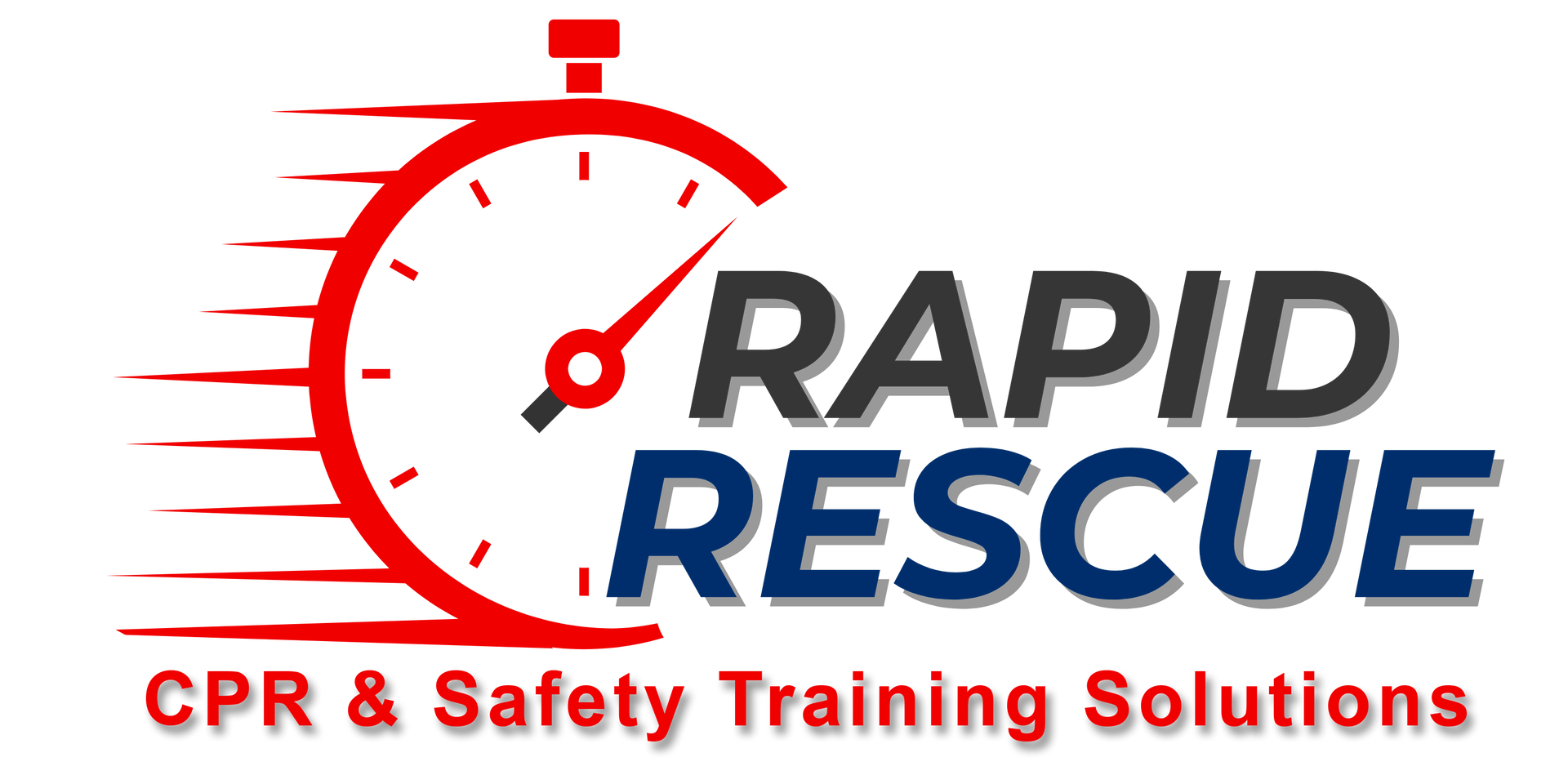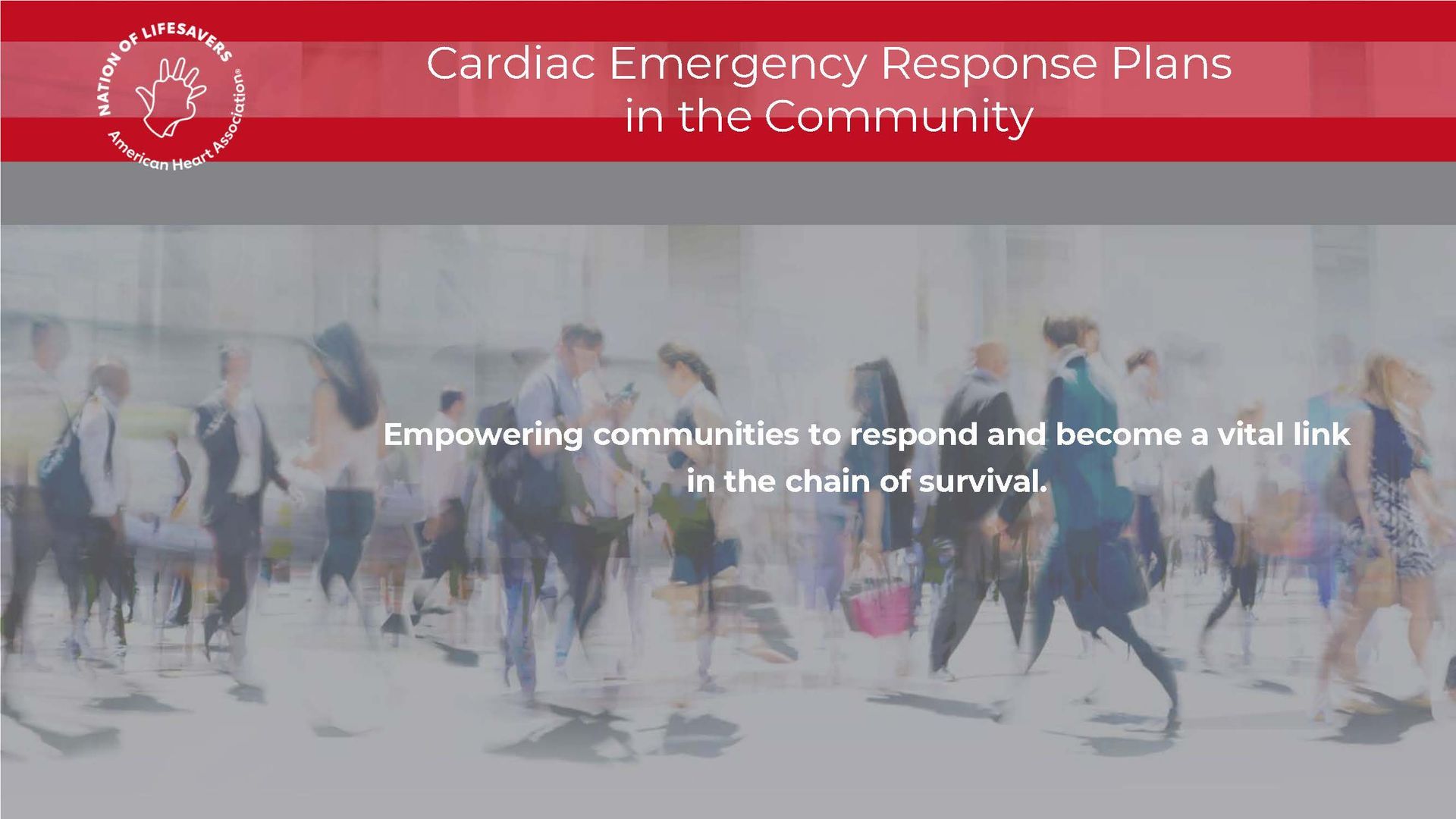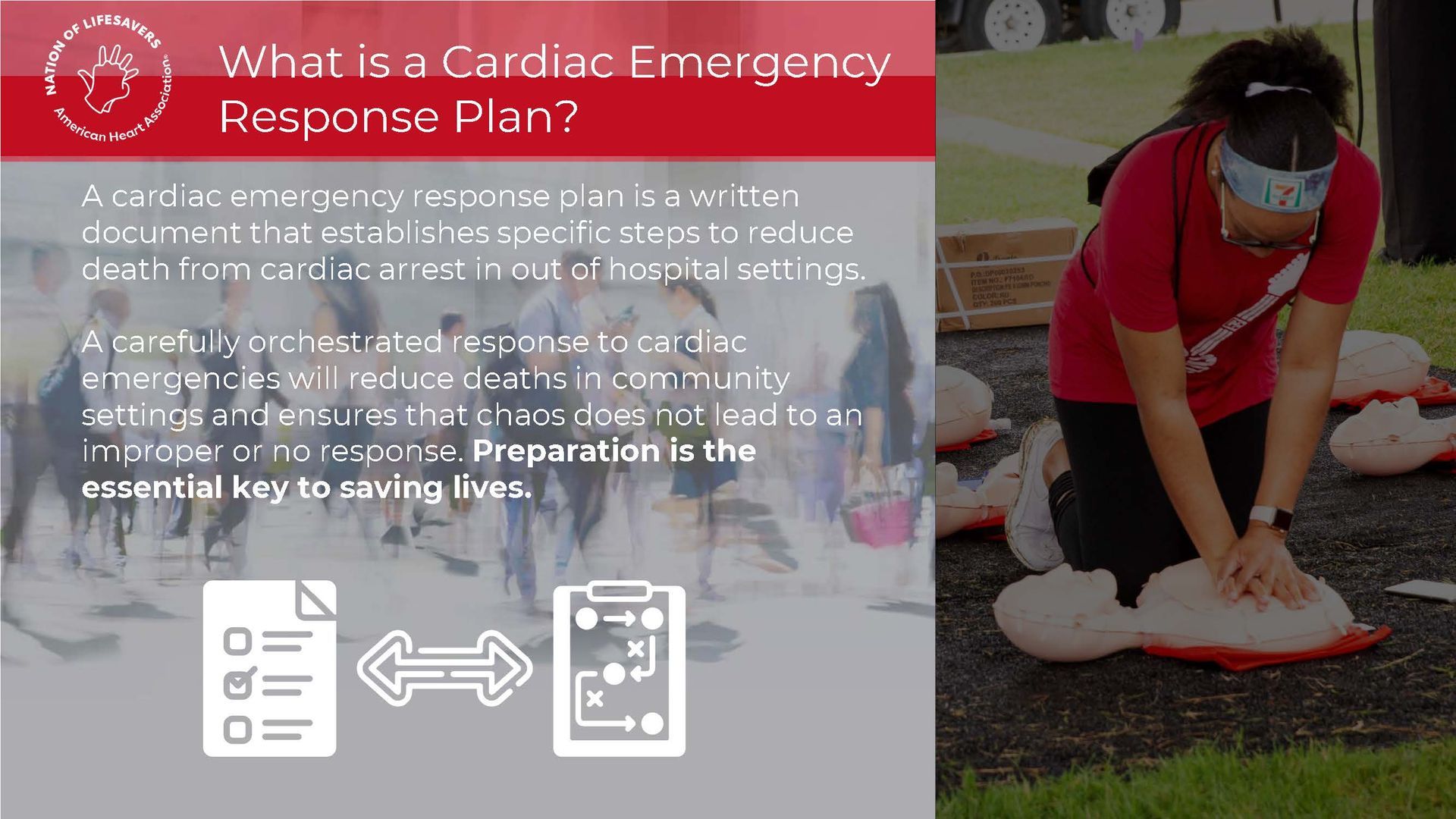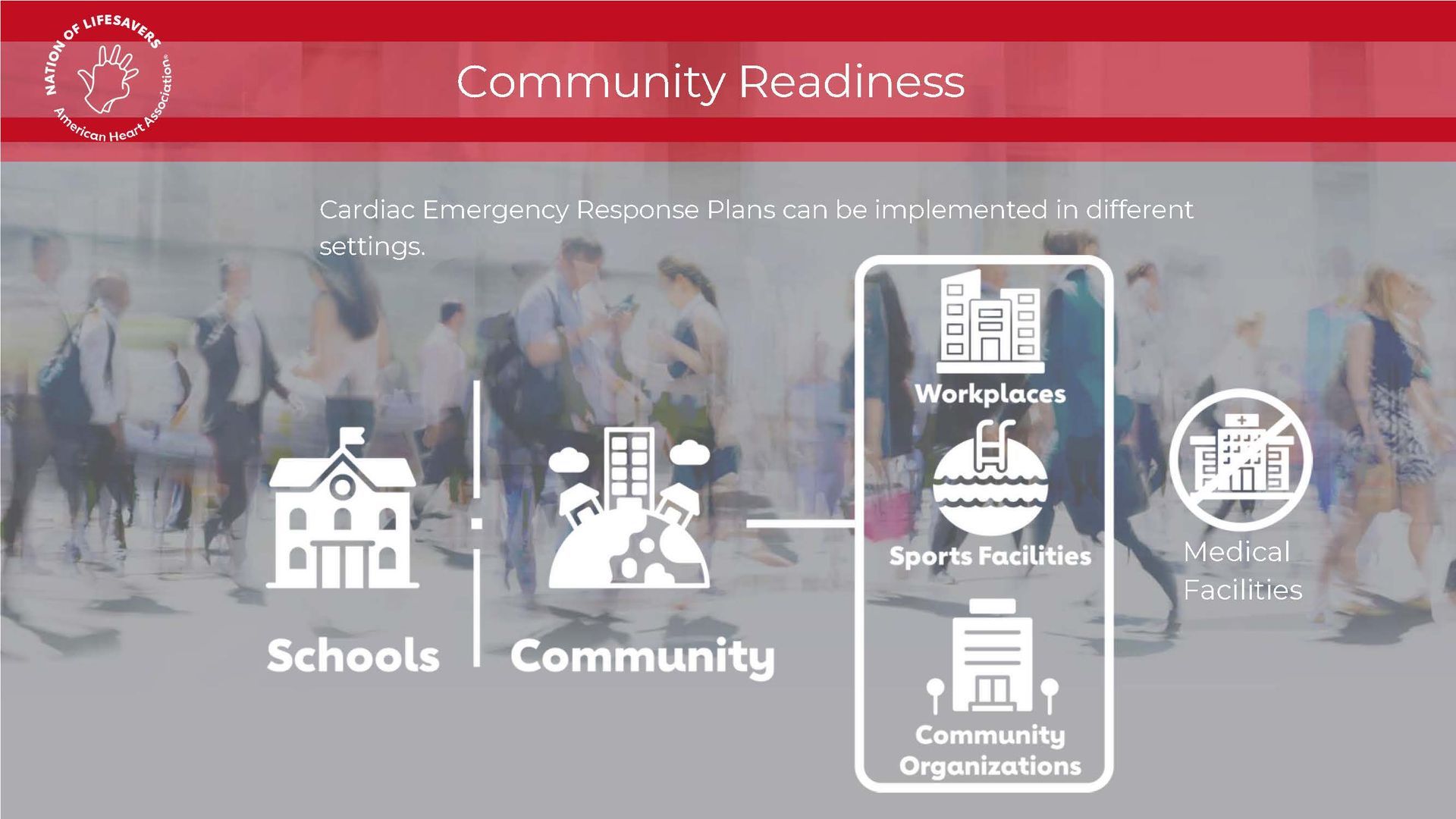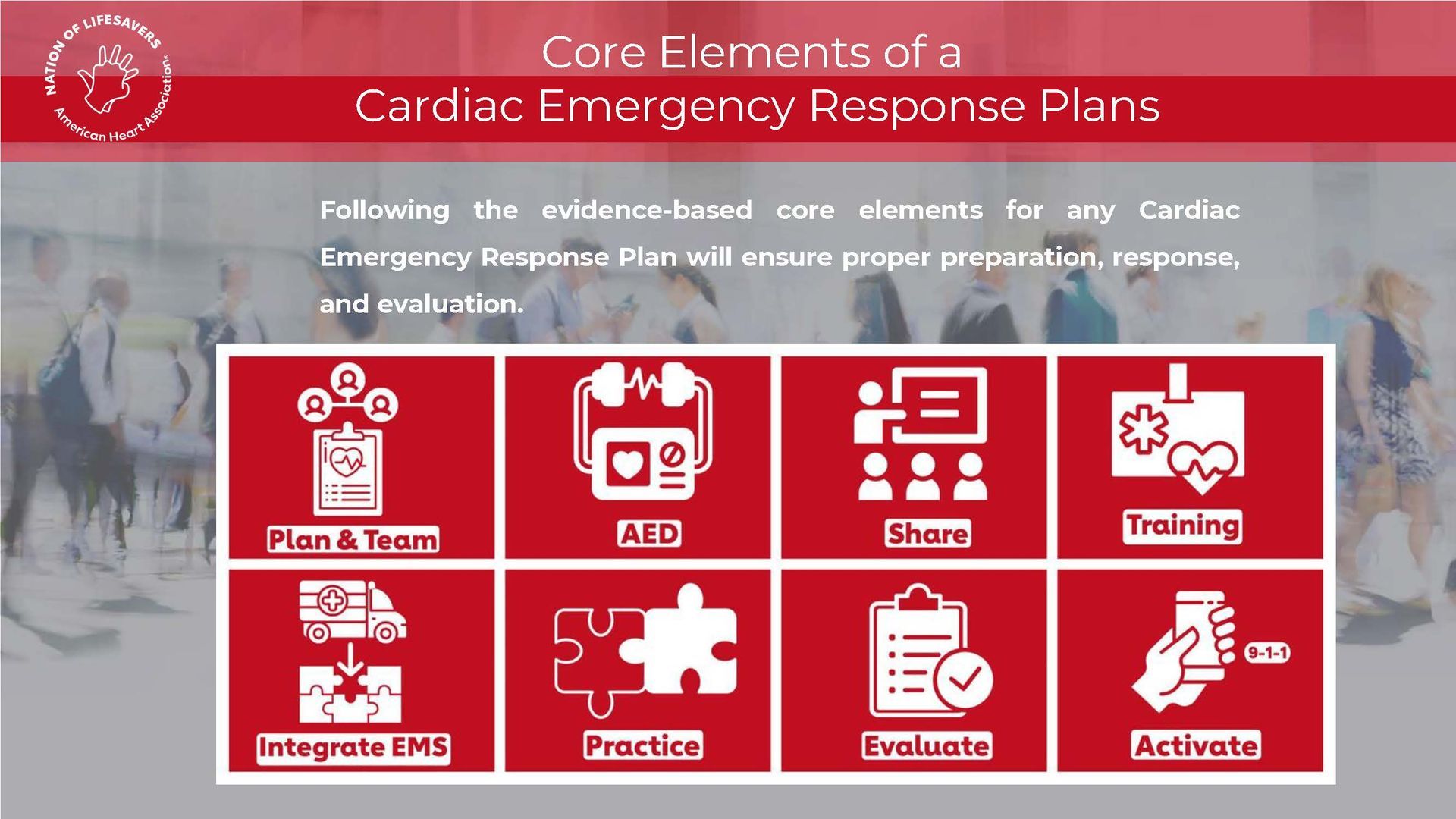CPR/AED, First Aid Training F.A.Q's
Have questions about CPR/AED, First Aid or More?
-
When were the most recent CPR guideline updates released?
The American Heart Association last updated its CPR guidelines in October 2015. The biggest shift from earlier recommendations was to begin with chest compressions before providing rescue breaths. The updated sequence is:
*First, check whether the person is unresponsive and not breathing normally.
*Call 911 or activate your local emergency response system.
*Deliver 30 chest compressions in the center of the chest—push hard and fast at about 100–120 compressions per minute, pressing down 2 to 2.4 inches.
*If you’ve been trained, follow with 2 rescue breaths, then continue cycles of 30 compressions and 2 breaths.
*If you haven’t been trained in giving breaths, continue hands-only compressions until help arrives.
-
Why were the CPR guidelines revised?
Research on both people and animals showed that survival rates improve when the heart is kept filled with blood—particularly right before a defibrillator is used. The most reliable way to achieve this is through strong, consistent chest compressions. Because rescue breathing can be difficult for someone without training, the updated recommendations put the primary focus on continuous compressions to give patients the best chance of survival.
-
When is hands-only CPR recommended?
The American Heart Association advises hands-only CPR in situations where an adult suddenly collapses and the bystander has not been trained in full CPR. In these cases, the steps are simple: call 911 right away and begin pushing hard and fast in the center of the chest, minimizing any pauses until emergency responders arrive. Even for people who have learned traditional CPR, hands-only compressions are appropriate if they do not feel confident giving rescue breaths or choose not to provide them.
-
What should I do if someone needs CPR but must be moved first, such as after a car accident?
If the person is in need of CPR and must be moved, move the person and begin CPR. Remember, if you don't do CPR the person will die. The neck injury is only theoretical if you move the person. Death, if you don't do CPR, is 100% certain. Whenever you move a person with a possible neck injury try, to support the head during movement and keep it as straight as possible.
-
How effective is the heart as a pump during CPR?
The best estimate of the heart efficiency during CPR is 20-30% of normal.
-
Should CPR always be given to someone who is unconscious?
It is true that sometimes a person may be unconscious and their heart is still beating and they may still be breathing. Such a situation, for example, may occur in someone who has just had a grand mal seizure. If you tried to do CPR on such a person, he or she would probably groan and even try to push you away. This would be your clue that CPR was not needed. CPR is intended only for someone whose heart and breathing have stopped. If the victim moves or pushes you away, you should stop CPR.
-
What is the compression-to-breath ratio for two-person CPR?
When two trained rescuers are providing CPR, the recommended ratio is 30 chest compressions followed by 2 breaths for adults. For children and infants, the ratio changes to 15 compressions for every 2 breaths. This adjustment allows for more frequent ventilations since younger patients are more likely to experience breathing-related cardiac arrest. In all cases, rescuers should coordinate to minimize pauses in compressions and deliver care as smoothly as possible.
-
How can I tell if CPR is effective?
You can tell if the chest rises with ventilation. It is hard to determine if the chest compression results in a pulse. Do the best you can and don't stop. It's better to perform CPR imperfectly than not at all.
-
How do I perform CPR on someone with a tracheal stoma, and am I giving them oxygen or carbon dioxide?
There are two types of stomas, one which communicates to the nose and mouth and one which doesn't. Since you won't know which type you are dealing with, it is best to pinch the victim's nose closed, keep the victim's mouth closed, and breathe directly into the stoma opening.
When you are giving mouth to mouth are you actually breathing oxygen into the victim's lungs or are you trying to stimulate breathing by breathing carbon dioxide into their lungs?
You are breathing oxygen into the lungs. Your exhaled breath contains 16% oxygen which is close to the 20% contained in the air you breathe in.
-
If someone has had bypass surgery, should CPR be done differently?
No. A history of bypass surgery does not change how CPR is performed. If the person is unresponsive and not breathing normally, provide CPR using the standard guidelines. The priority is to maintain blood flow and oxygen until emergency help arrives.
-
Does body weight affect the chance of breaking ribs during CPR?
The weight of the victim has little to do with the chances of breaking a rib, instead the age of the victim seems to determine the fragility of the bones.
-
Can I cause someone’s death by performing CPR incorrectly?
No. Remember the person in cardiac arrest is already clinically dead. CPR can only help. Even if it's not done "letter-perfect", it will probably provide some benefit to the victim.
-
What happens if I break a rib while doing CPR?
Frequently ribs are broken with the pressure CPR places on the sternum. Some studies quote that up to 30% of cardiac arrest victims have broken ribs as a result of CPR. This happens more frequently the older the victim since the cartilage is less compliant and the bones more easily crackable. But remember, it's better to have a cracked rib than to be dead.
-
Will CPR always save someone’s life?
No, in fact, most instances of CPR for cardiac arrest are unsuccessful.
-
What does the recovery position mean?
Assuming the person has a pulse and is breathing, the recovery position means placing the person on his or her side. This allows for the person not to choke on saliva and helps keep the airway open. The downside arm may be raised to support the head.
-
What should you do if someone has been shocked by electricity?
A person with electric shock (assuming the shock doesn't severely damage the body) often dies from the heart going into ventricular fibrillation. Such a person needs CPR and it should be performed in a regular fashion. If CPR begins quickly and if a defibrillator arrives quickly, this person has an excellent chance of survival.
I want to know what the current teachings are on helping a choking victim. I have heard conflicting information on back blows for an adult. Is it still recommended, or discouraged?
The first action to take in adults and children is the Heimlich maneuver. Back blows are the first thing to do only in infants who are conscious. In doing the back blows the infant should be in a face-down position with the head lower than the body.
-
What should you do if the victim vomits during CPR?
Vomit is obviously unpleasant. If it happens (and it may in one out of 20 cardiac arrests), merely turn the head to the side and wipe out the vomit as best you can with your finger.
-
What should you do if someone collapses from an asthma attack? Will CPR help?
If someone collapses from an asthma attack, it is because he or she is not getting enough oxygen. This is because all the lung's small airways have narrowed and are not allowing enough air to reach the air sacs. Mouth to mouth respiration may help a little. The real need is to get this person to an emergency department so that the patient can receive medications and emergency endotracheal intubation (a tube in the main airway).
-
What are common reasons children may need CPR, and how should the Heimlich maneuver be given if the victim is lying down?
Usually CPR in infants and children is performed for respiratory arrest such as severe asthma. Ventricular fibrillation is rare in children but very common in older adults.
In regards to administering the Heimlich Maneuver to a victim while they are lying down, should the head be facing up, as when administering CPR (in order to clear the airway), or to the side?
The victim's head should be facing up with the victim on his/her back. Since the airway is blocked you shouldn't spend much time positioning the head. The Heimlich maneuver is the most important thing to do and should unblock the airway
-
What should you do if the victim is wearing dentures during CPR?
Keep them in place if possible as they will allow for a better seal of your mouth on his/hers.
-
Is there a risk of getting AIDS from performing CPR?
No. There has never been a documented case of AIDS transmitted by CPR.
-
Can I be sued for performing CPR?
You theoretically could but there has never been a successful suit brought against someone performing CPR.
-
Does the Good Samaritan law protect me if I give CPR?
Does the Good Samaritan law protect me?
-
What are agonal respirations?
Agonal respirations are abnormal, gasping breaths that can occur for a short time after the heart has stopped. They may sound like snoring, snorting, or gasping, and often happen in the first few minutes of cardiac arrest. These breaths are not effective breathing and should not be mistaken for normal respiration. If you see them, begin CPR right away.
-
What are the chances of recovery after an out-of-hospital cardiac arrest, and how often do survivors have severe brain injury?
Results vary widely from place to place and depend on factors like how fast 911 is called, whether bystander CPR is started, how quickly an AED is used, the initial heart rhythm, and hospital care afterward. Reported survival to hospital discharge ranges from low single digits in some communities to around 20% (or higher for shockable rhythms like ventricular fibrillation) in systems with rapid response and strong bystander CPR rates. Among those who survive to discharge, most have good neurologic recovery; severe, long-term brain injury is uncommon, and persistent vegetative state is rare. The most important predictors of a good outcome are early 911 activation, immediate high-quality CPR, and early defibrillation.
-
Can CPR be performed on dogs?
CPR can be performed on dogs. To give respiration, you will need to keep the dog's mouth and lips closed and breathe through the nose. Cover the dog's nose completely with your mouth to prevent air from leaking out. You should see the chest rise if you are doing it properly. To give chest compressions you might need to press side to side instead of straight down on the chest. This is especially true for funnel chested dogs. The rates of respiration to chest compression are the same as for humans. In general, most instances of CPR for dogs will involve accidents of smoke inhalation or drowning. Respirations may indeed prove life-saving especially if the dog has a heartbeat. Once the dog's heart stops beating it is unlikely that CPR will be of benefit. By the way, the name "Gingy" in my address is for my 13-year-old golden retriever.
-
If the person moves while I’m doing CPR, should I stop?
Yes, if a person moves their arms or legs, then they don't need CPR.
-
When should CPR be stopped?
When help arrives to take over, or the victim starts to move.
-
What are the chances of survival if I perform CPR on someone in cardiac arrest?
If you do CPR on a person whose heart has stopped beating, there is a 40% chance the person will live if a defibrillator can arrive within 10 minutes to shock the heart.
-
What should I do if a pregnant woman is choking?
You should do the chest thrust in a very pregnant woman. This is like the Heimlich except you grab around the middle chest instead of the upper abdomen. Click here for more info.
-
Why is 911 called immediately for adults in cardiac arrest, but after 2 minutes of CPR for infants and children?
It is because airway problems are the main cause of cardiac arrest in infants and trying to correct that problem takes precedence over calling 911.
-
Are portable defibrillators available to the public?
Portable defibrillators which operate automatically (they are called automated external defibrillators - AEDs) are available and may be purchased without a prescription. They cost around $1000. The training is very simple and takes only minutes. You should talk to your doctor as to whether one of these might be indicated in your situation.
-
Is CPR futile after a traumatic fall if the victim has no pulse?
Doing CPR in the wilderness is futile. I would, however, make an attempt to open the airway and perhaps give several ventilations. You may be dealing with respiratory arrest and a little mouth to mouth could be lifesaving.
-
If someone regains a pulse during CPR, does that mean they probably had one all along?
Not always. In most cases of cardiac arrest, especially when caused by ventricular fibrillation, CPR alone cannot restart the heart—defibrillation is required. However, there are situations where the heart is beating very slowly or weakly, and high-quality CPR provides enough oxygen and circulation to help the heart recover. So while a return of pulse during CPR is uncommon, it is possible.
Did these F.A.Q's answer your Questions?
If not, what do YOU need to know?
Thank you for reviewing our Frequently Asked Questions. We strive to cover all aspects of CPR certification to guide you effectively. However, we recognize that you might have specific questions or need further clarification. Please feel free to contact us with any additional inquiries. Your understanding and comfort with the certification process are our top priorities, and we're here to ensure you receive all the information you need. Your feedback is also greatly appreciated as it helps us refine our resources and better serve your needs. Let us assist you in any way we can.
Have Questions..?
Do you have any questions about CPR/AED, First Aid Training or More? We'd be happy to answer any questions you might have.
